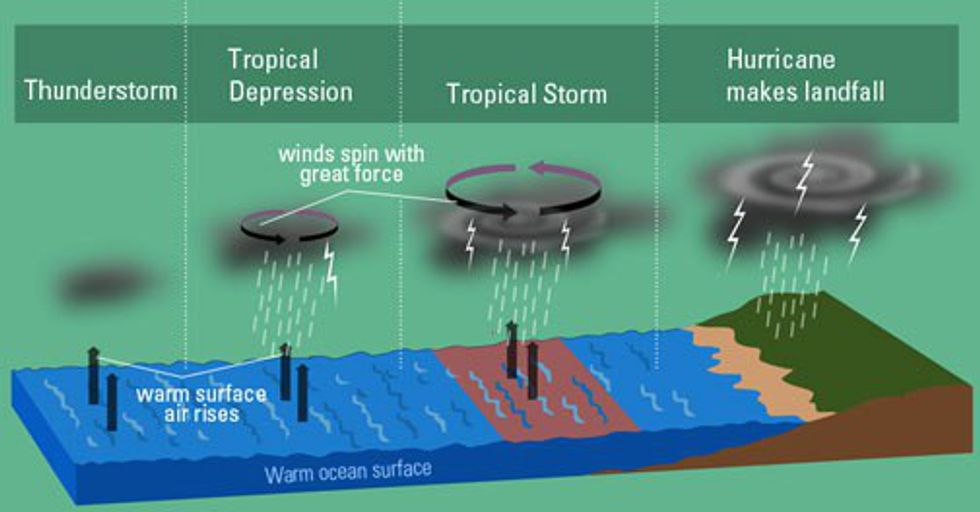While writing this, the United States, along with nations like Haiti, is experiencing the effects of Hurricane Matthew. So far the hurricane has killed over 900 people and left millions of people in Florida and Georgia without power. Granted, America and many Caribbean nations are not unfamiliar with hurricanes. In 2005, America was hit by Hurricane Katrina, leaving around 2000 people dead and over 15,000 homeless. These storms are powerful forces of nature with powerful winds that have been recorded over 190 miles per hour in the case of Hurricane Camille. Yet, the real question is: how do hurricanes form in the first place?
Hurricanes, cyclones and typhoons are all vicious names for tropical storms. The only difference between the three is the location of where they form. Hurricanes usually refer to storms that form over the Atlantic Ocean or on the eastern part of the Pacific Ocean. The first condition to form a hurricane is warm tropical water. This is why all hurricanes form near the equator, usually following a very predictable path. The next step in a hurricane's formation is the evaporation of warm tropical water into giant cumulonimbus clouds. Now the formation of a hurricane gets complicated. The cumulonimbus clouds begin to stack on each other forming giant columns of air. Heat energy is released from the cooling water vapor; the air at the top of the clouds columns warms up making the air pressure increase and causing winds to move outward away from the high pressure area. At this point thunderstorms form while the clouds begin to spin around the center point. Once wind speed reaches 39 miles per hour, the storm is classified as a tropical storm.
When wind speeds reach 74 mph, the storm is officially becomes a hurricane. Hurricanes stand around 50,000 feet high and around 125 miles across. The eye is around 5 to 30 miles across depending on the size of the storm. At this point the storm will continue to grow stronger as long as it has access to warm ocean water. The only good part is that it will cease to grow and start to deteriorateonce it hits land. Of course this can also be catastrophic for mankind as the brute force of nature overwhelms the eastern seaboard.
There are five categories of hurricane classification. The classification is determined by wind speed and the amount of damage that it causes once hitting land. A category I storm sees wind speeds around 74-95 miles per hour while a category II has winds between 96 and 110 miles per hour. A category III has gusts blowing at 111 to 129 miles per hour. Category IV hurricanes see winds between 136 and 150 miles per hour. Lastly a category V hurricane, the biggest classification, can see gusts anywhere above 150 miles per hour-- that is faster than what most cars can do on an open highway. The world is scary place, but at the same time it is amazing that science has allowed us to study the most destructive forces of mother nature.






















